Rolf Krake was a Danish turret ironclad built in Scotland by Robert Napier in 1862-63, designed by Cowper Phipps Coles, the father of British turrets, and thus not only the first Danish Turret ship, but also one of the first in Europe that was sea-going and not just a monitor. In fact, she was even the first warship of any navy, to carry a turret of that type from Coles. She was also the first all-iron and steam-powered warship acquired by Denmark, a bold move that cemented the country’s naval ambitions at the time, notably against Prussia.

Design of the class
Rolf Krake was indeed ordered in 1862, as tensions grew between Prussia and Denmark, over the Duchy of Schleswig-Holstein, in the early 1860s. This will flare up eventually in a full-fledge war, in which the efficient Danish blockade convinced the Prussian they needed to bolster their fleet. The Prussian had no equivalent to the Rolf Krake, a veritable “secret weapon” of the Danes that could on paper defeat any ironclad launched against her to break the blockade. Construction was voted at the Riskdag in 1861 and was ordered on 28 August 1862 to Robert Napier and Sons, Govan. She was laid down the same year (date unknown) but launched on 6 May 1863 and commissioned (completed earlier presumably) on 1 July 1863.
The move to adopt such innovative armament was decided quickly. Originally she was to be completed as a complete broadside ironclad, with four Swedish-built 68-pounder smoothbore guns in a central casemate, but the Danish naval attaché in Britain knew about coles attempt to make his turret adopted by the Royal Navy at the time, and looked for potential buyers abroad. A contract was signed in which Coles took part in the ship design overall to carry two turrets, each with two guns, the same being adopted from Bofors.
Hull and general design
Rolfe Krake had an overall length of 191 feet 3 inches (58.3 m) for a beam of 38 feet 1 inch (11.6 m) and draft of 11 feet 6 inches (3.5 m). Her displacement was 1,360 long tons (1,382 t). She had a complement of 140 officers and ratings. She was originally designed to operate in the Baltic, with shallow and calm waters, and so had a low freeboard, following the idea to use water as an additional hull protection and reducing the size of the armour. However, sea keeping in heavy weather or for sorties on the North Sea was poor, so she was equipped with hinged bulwarks to improve her seakeeping abilities. They were folded down to allow the main gun turrets to fire across her deck. She was also equipped with a beak-shaped ram at the bow for such actions at a time the battle of Lissa had not happened yet.
Powerplant
Rolf Krake needed to be fast to use her ram, and was given a single shaft, driven by a Napier single direct-acting steam engine. She was propelled by a 9-foot (110 in) 4-bladed propeller using steam coming from two boilers of unknown, possibly Napier type. This powerplant produced 700 indicated horsepower (520 kW), enough for a top speed, unremarkable for the time, of 10.5 knots (19.4 km/h; 12.1 mph). As for her range, in her sea trials of mid-1863 she carried 135 long tons (137 t) of coal and was able to cross 1,150 nautical miles (2,130 km; 1,320 mi) at 8 knots (15 km/h; 9.2 mph). However for long voyages, sparing her coal for naval actions, she was schooner-rigged, with three masts.

Conways extract (pinterest)
Protection
Rolf Krake was an all-iron built ironclad, and thus, was well protected, with a complete waterline belt made of wrought iron 4.5-inch (110 mm) thick. This belt covered the hull from the upper deck and down to 3 feet (0.9 m) below the waterline. This belt was backed by 8 inches (203 mm) of wood still bur buffering the structure, a common scheme at the time. It was probably teak.
The turrets were of the “chesee box” type with straight walls, but their own protection was quite elaborate as designed by Coles:
-The turret inside was lined with 0.375 inches (9.5 mm) of iron boilerplate, secured by T-shaped beams, all bolted.
-The space between beams was filled with 10 inches (254 mm) of wood.
-The outer layer was made of an iron lattice 0.75 inches (19 mm) thick acting as support
-The second outer layer was covered in turn by 7 inches (178 mm) wood.
-The final external armour was made of 4.5-inch iron plates bolted running through to the interior iron “skin”.
-The area around the gun ports was reinforced by 3.5-inch (89 mm) plates for a 8 inches total.
The Rolf Krake also had a conning tower, a small pilothouse protected by 4.5 inches of iron, backed by 11 inches (279 mm) of wood.
Her deck was however unprotected, with just the structural 0.5 inches (12.7 mm) sheet iron topped by 3 inches (76 mm) of wood.
Armament
Rolf Krake was initially armed with four Swedish-built 68-pounder smoothbore guns paired in each Coles gun turret, using a balanced table pivot on roller bearings. They were hand-operated however, not steam operated, and it took 18 men and one minute for a full revolution.
This was her only armament, there was no smaller caliber, but the men’s own personal weapon for a possible boarding or short landing party.
As for the Swedish Guns, they were a local variant of the British smoothbore produced from 1841 to 1861 (more than 2000 were manufactured by Low Moor Ironworks). It was designed by William Dunads originally. Bofors acquired the licence. Some were later converted to rifle muzzle loaders by Captain W. palliser.
⚙ specifications as built 1865 |
|
| Displacement | 1,360 long tons (1,380 t) |
| Dimensions | 191 ft 3 in x 38 ft 1 in x 11 ft 6 in (58.3 x 11.6 x 3.5 m) |
| Propulsion | 1 shaft direct-acting steam engine 700 ihp (520 kW) |
| Speed | 10.5 knots (19.4 km/h; 12.1 mph) |
| Range | 1,150 nmi (2,130 km; 1,320 mi) at 8 knots (15 km/h; 9.2 mph) |
| Armament | 2× Bofors 68-pdr smoothbore muzzle-loading guns |
| Protection | Belt: 4.5 in (110 mm), Gun turret: 4.5 in (110 mm) |
| Crew | 140 |
Career of HDMS Rolfe Krake

Rolfe Krake at the battle of Dybbøl
The ironclad was named after Rolf Krake, a hero of Danish saga, and construction at Govan proceeded smoothly. She was commissioned upon her arrival in Denmark in July 1863 and engaged in sea trials from 18 July, until to 20 August 1863. In the Second Schleswig War, Rolf Krake first saw action in Flensborg Fjord, off Egernsund, on 18 February 1864. She was tasked with shelling a pontoon bridge over the mouth of Nybøl Nor, on the path of advancing Prussians. After firing 57 shots, and coming under heavy fire herself, she returned to Sønderborg with three wounded on board but mission accomplished. The bridge needed repairs and this delayed the crossing.
She was repaired in Sønderborg. On 22-26 February, Rolf Krake was sent in reconnaissance and on 28 March, the Prussians forces launched a quick attack on the Dybbøl redoubts. Rolf Krake entered Vemmingbund, and shelled the advancing Prussians. She proved instrumental in collapsing the attack.
On 18 April 1864, at At 10:00, Prussian forces tried to storm Danish positions again and Rolf Krake fired 95 shots against their right wing advance. This slowed down, but not stopped the attack, but she could not prevent the Danish troops from abandoning the Dybbølskanserne at noon, retreating over the pontoon bridge to Sønderborg.

Painting by Carl Frederik Sorensen 1863
After the end of the armistice, the Prussians brought troops over Als at 2:00 am on 29 June and Sottrupskov. Rolf Krake was then in Augustenborg Fjord. Sne sailed out into Als Sund, opened fire on the Prussians and brought their landing operations to an end after three quarters of an hour of pounding. Her commander, Captain H.P. Rothe, thought the defence of Als was further south, indicated that the Danish defence there was already abandoned. She this left to take part in the evacuation of the Danish forces, by sailing back into Augustenborg Fjord, allowing the Prussians to resume landing and build a pontoon bridge across Als Sund. After the war, Captain Rothe was court-martialled for this error, but acquitted. It was emphasized that he would have had to leave Als Sund as soon as possible, since she could not withstand the powerful Prussian artillery positions set up along the strait.
Rolf Krake active career after the war went on, with modifications. In the 1870s her obsolete artillery was replaced with newer guns while the original masts were removed. The sails had never used, so the rigging was severely hampered during combat and instead two light signal masts were fitted. In 1867 alread she received a single 20.3 cm rifled gun (150t) and two 60 pounders (88t)
as well as eight 4 pounder howitzers. In 1875 the latter were replaced by two 3-inches or 76 mm rifled guns.
In 1878 the turrets contained a single 20.3 cm rifled guns (144t) each and the two 76 mm rifled guns were later replaced by two 87 mm rifled guns and four revolver guns in 1886.
In 1893, Rolf Krake was no longer considered a frontline asset, and she was converted as an experimental ship, notably testing new cannons until her decommission in 1907, sold and scrapped in the Netherlands.
Read More/Src
Books
Gardiner, Robert, ed. (1979). Conway’s All the World’s Fighting Ships 1860–1905. Greenwich: Conway Maritime Press.
Silverstone, Paul H. (1984). Directory of the World’s Capital Ships. New York: Hippocrene Books.
Links
web.archive.org navalhistory.dk/ RolfKrake(1863).htm
milhist.dk/ panserbatteriet-rolf-krake 1864
en.wikipedia.org HDMS_Rolf_Krake_(1863)
Panserbatteriet_Rolf_Krake
3D
Gallery (pinterest)






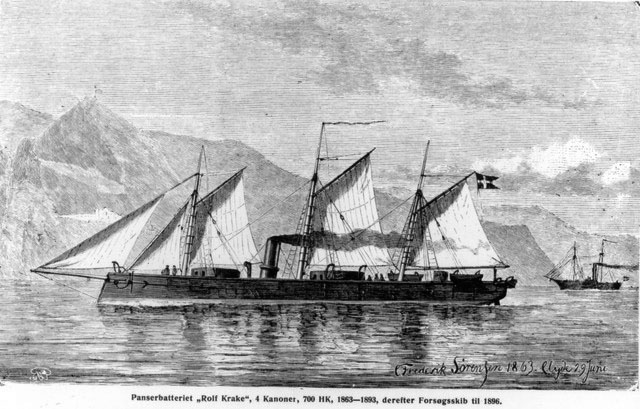
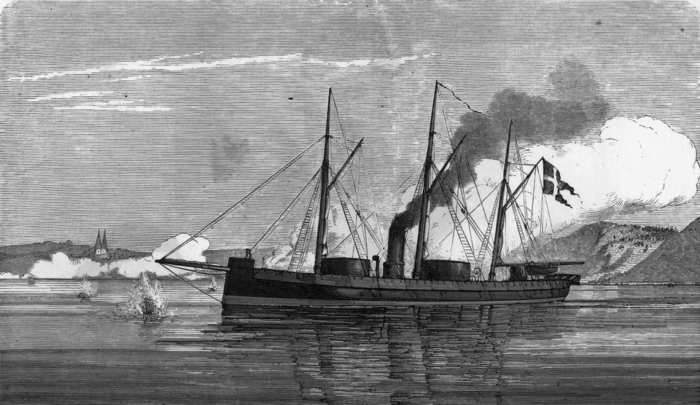
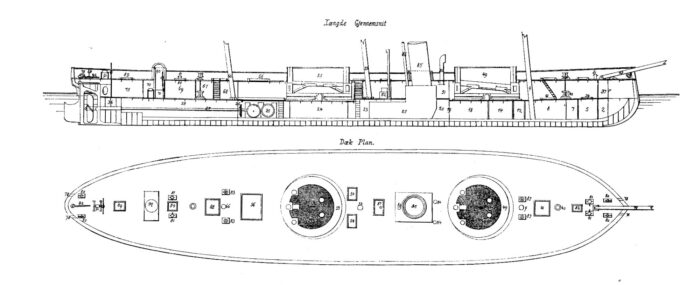
 Latest Facebook Entry -
Latest Facebook Entry -  X(Tweeter) Naval Encyclopedia's deck archive
X(Tweeter) Naval Encyclopedia's deck archive Instagram (@navalencyc)
Instagram (@navalencyc)


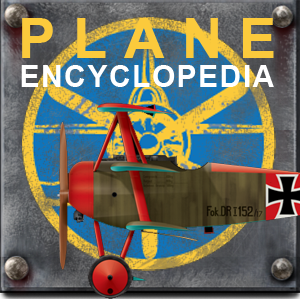
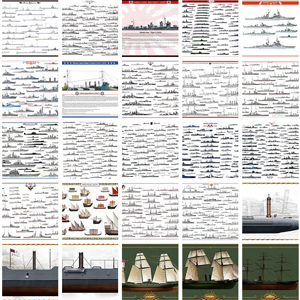

 French Navy
French Navy Royal Navy
Royal Navy Russian Navy
Russian Navy Armada Espanola
Armada Espanola Austrian Navy
Austrian Navy K.u.K. Kriegsmarine
K.u.K. Kriegsmarine Dansk Marine
Dansk Marine Nautiko Hellenon
Nautiko Hellenon Koninklije Marine 1870
Koninklije Marine 1870 Marinha do Brasil
Marinha do Brasil Osmanlı Donanması
Osmanlı Donanması Marina Do Peru
Marina Do Peru Marinha do Portugal
Marinha do Portugal Regia Marina 1870
Regia Marina 1870 Nihhon Kaigun 1870
Nihhon Kaigun 1870 Preußische Marine 1870
Preußische Marine 1870 Russkiy Flot 1870
Russkiy Flot 1870 Svenska marinen
Svenska marinen Søværnet
Søværnet Union Navy
Union Navy Confederate Navy
Confederate Navy Armada de Argentina
Armada de Argentina Imperial Chinese Navy
Imperial Chinese Navy Marinha do Portugal
Marinha do Portugal Mexico
Mexico Kaiserliche Marine
Kaiserliche Marine 1898 US Navy
1898 US Navy Sovietskiy Flot
Sovietskiy Flot Royal Canadian Navy
Royal Canadian Navy Royal Australian Navy
Royal Australian Navy RNZN Fleet
RNZN Fleet Chinese Navy 1937
Chinese Navy 1937 Kriegsmarine
Kriegsmarine Chilean Navy
Chilean Navy Danish Navy
Danish Navy Finnish Navy
Finnish Navy Hellenic Navy
Hellenic Navy Polish Navy
Polish Navy Romanian Navy
Romanian Navy Turkish Navy
Turkish Navy Royal Yugoslav Navy
Royal Yugoslav Navy Royal Thai Navy
Royal Thai Navy Minor Navies
Minor Navies Albania
Albania Austria
Austria Belgium
Belgium Columbia
Columbia Costa Rica
Costa Rica Cuba
Cuba Czechoslovakia
Czechoslovakia Dominican Republic
Dominican Republic Haiti
Haiti Hungary
Hungary Honduras
Honduras Estonia
Estonia Iceland
Iceland Eire
Eire Equador
Equador Iran
Iran Iraq
Iraq Latvia
Latvia Liberia
Liberia Lithuania
Lithuania Mandchukuo
Mandchukuo Morocco
Morocco Nicaragua
Nicaragua Persia
Persia San Salvador
San Salvador Sarawak
Sarawak Uruguay
Uruguay Venezuela
Venezuela Zanzibar
Zanzibar Warsaw Pact Navies
Warsaw Pact Navies Bulgaria
Bulgaria Hungary
Hungary

 Bundesmarine
Bundesmarine Dutch Navy
Dutch Navy Hellenic Navy
Hellenic Navy Marina Militare
Marina Militare Yugoslav Navy
Yugoslav Navy Chinese Navy
Chinese Navy Indian Navy
Indian Navy Indonesian Navy
Indonesian Navy JMSDF
JMSDF North Korean Navy
North Korean Navy Pakistani Navy
Pakistani Navy Philippines Navy
Philippines Navy ROKN
ROKN Rep. of Singapore Navy
Rep. of Singapore Navy Taiwanese Navy
Taiwanese Navy IDF Navy
IDF Navy Saudi Navy
Saudi Navy Royal New Zealand Navy
Royal New Zealand Navy Egyptian Navy
Egyptian Navy South African Navy
South African Navy






























 Ukrainian Navy
Ukrainian Navy dbodesign
dbodesign